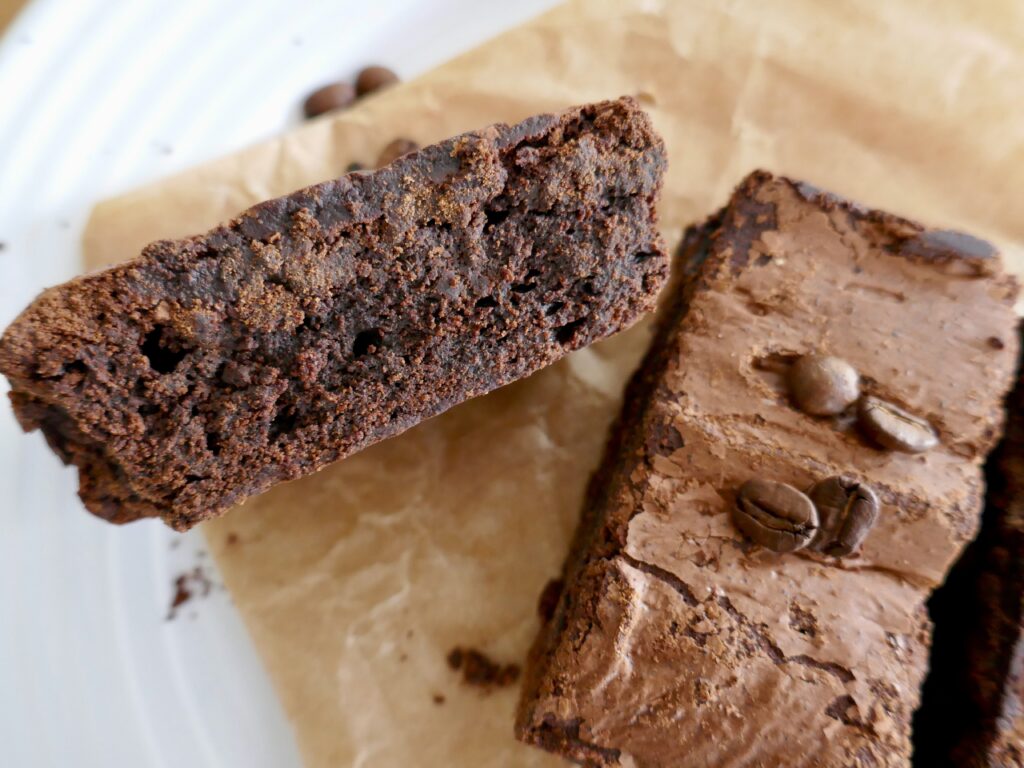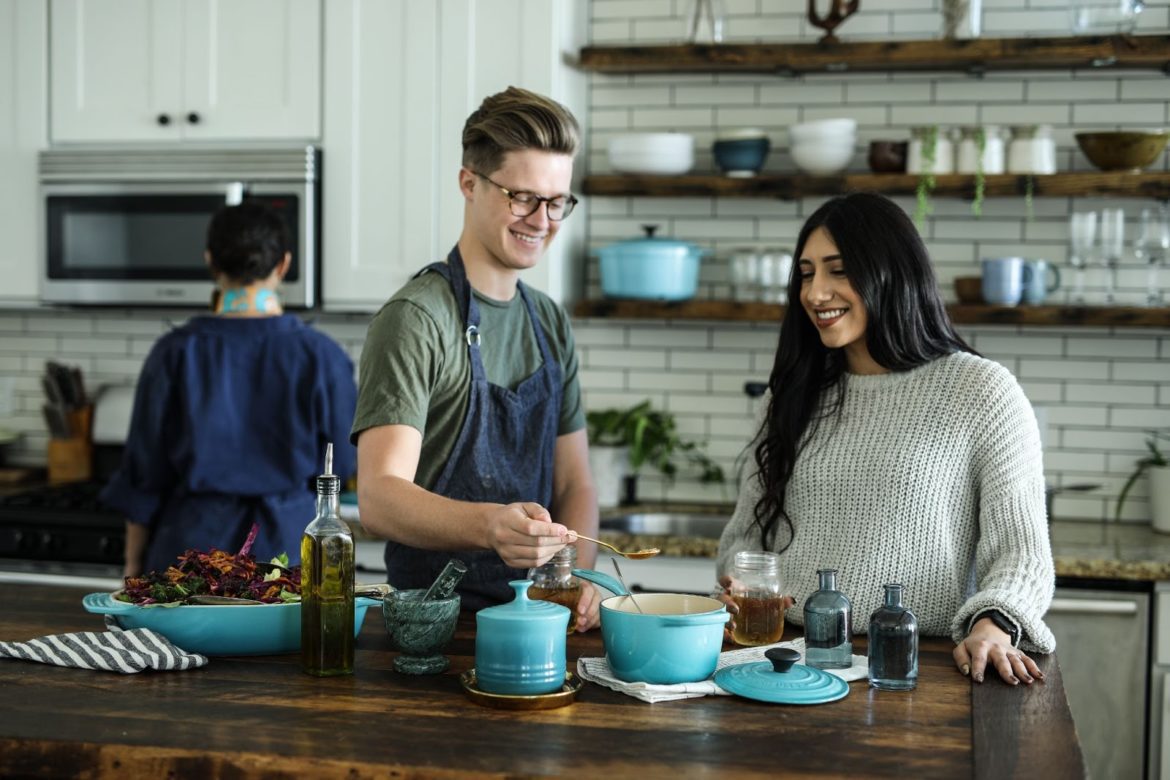Edibles are everywhere. People who want to enjoy the effects of cannabis but don’t want to smoke it rely on edibles to provide them with a mellow good time. While there are hundreds of options for cannabis-infused foods (and even drinks) to choose from, people who prefer to cook at home would rather make something fresh that fits within their dietary preferences.
Your edibles don’t need to be loaded with sugar or corn syrup. They don’t need to have animal-derived ingredients or gluten. They can be paleo and made from whole foods. You can make your own high-fiber black bean cannabis brownies if you’d prefer to enjoy your pot in the form of a healthy snack. You can use cannabis-infused oils to make salad dressing if you want some green with your greens. All you need to do is find a recipe that includes butter or oil. It can be as healthy or as indulgent as you prefer.
Substituting all (or some) of the oil or butter for your own cannabis-infused alternative is all you need to do to turn a normal recipe into a homemade edible. Although it’s slightly complicated and time-consuming to make these infusions, you can make one large, potent batch and use it for months. Everything else is just as simple as cooking your favorite treats.
How do edibles work?
Edibles provide a more intense and longer-lasting high than other methods of consumption and require significantly less THC to get you where you’re trying to go. When you eat an edible, your body processes the food for its nutrients and metabolizes the cannabinoids.
Your liver converts the THC in your edible into a different form of THC, called 11-hydroxy-THC, that’s easier for your body to use. This converted THC releases slowly and efficiently to your body’s cannabinoid receptor, providing a constant and somewhat intense high until the THC completely leaves your body.
Because edibles need to be processed by your digestive system, it takes anywhere between 45 minutes and 3 hours for them to become effective. Once they start to work, it can take anywhere between 4 and 8 hours for them to wear off.
The experience is significantly different from smoking because of this conversion and release process. You need less THC to produce your desired effect, and the effects will ride for much longer.
If you plan on using an edible, try to stay in for the rest of the day. If you need to go out, it’s best to have a designated driver or to use a ride-sharing app.
Make sure you’re all set up and cozy, and that you have a game plan to navigate the better part of your day while high.
You can’t just cook with weed
It would be really simple if you could use your weed like chocolate sprinkles or oregano, effortlessly seasoning prepared foods and indulging right on the spot.
Unfortunately, edibles can’t work that way. If you were to eat a dried cannabis flower, it’s highly unlikely that you’d experience any psychoactive effects.
Most of the THC in your cannabis flower is in its acid form, THCA.
In order for it to become psychoactive, the acid group attached to it needs to be removed. The simplest way to do this is to gently burn it off. When you smoke your weed, the heat naturally burns the acid group away.
When you’re making edibles, you need to burn it off beforehand.
The moisture and other ingredients in your recipe will throttle the cannabis from being fully activated. Even if you’re heating the food you’re making at a high temperature for a long period of time, it won’t be enough to properly remove that acid group.
Cannabis needs to undergo a process called decarboxylation before it can provide any value to your food outside of normal plant nutrients.

Decarboxylating your weed
To activate your weed for your edibles, you need to decarboxylate it.
Decarboxylation, or the removal of the weed’s carboxylic acid, sounds like something far more scientific and difficult than it actually is. All you’re really doing is lightly toasting it in the oven. It’s barely more difficult than rolling a joint and making a frozen pizza, and you’re likely acquainted with both endeavors.
Start by grinding your weed. It helps to choose a weed with a lower THC percentage (less than 20%) because your weed will ultimately become a part of a concentrate and the THC will add up.
Grind an eighth in your grinder, and aim for pieces the size of a grain of rice. If you wind up with something the consistency of cracked salt, it’s going to burn. Larger pieces may not thoroughly decarboxylate.
You’ll need two sheets of aluminum foil and a large glass baking dish or oven-safe casserole dish. Crumple one sheet of aluminum foil a little bit, and use it to line the dish.
Evenly sprinkle your ground cannabis over the top, and cover it with another piece of aluminum foil.
Bake it in the center rack of your oven at 220 degrees to 240 degrees for half an hour to 45 minutes. After 30 minutes, check on it to make sure it isn’t turning brown or burning. Your cannabis will be ready when it’s a toasty golden shade.
After you take it out, let it cool until you’re ready to make a cannabis infusion for cooking.
Measuring and diluting dosages
Dosing is extremely important with edibles. They’re very easy to inadvertently overconsume, and your body processes them in a way much different from the way it processes THC you smoke. An eighth is 3.5 grams. Weed is 1000mg per gram.
If you decarboxylated an eighth of 17% THC weed, each gram is 170 mg THC. You have 595 mg of THC sitting in front of you.
A good beginner dosage for edibles is 5 mg. People who are highly experienced with edibles may enjoy an edible as high as 30 mg. Knowing your audience is half the battle.
If you want to make a batch of eight brownies and you want each brownie to contain 20mg THC, that’s 160mg total. You’ll need to infuse a little more than a gram into your butter or oil and use it in the recipe.
You can also choose to dilute or concentrate your THC by making a large batch of infused butter or oil. Just remember to label the container you store it in with the amount of THC per tablespoon.
Infusing butter or oil
The easiest way to make infused butter or oil is to use a slow cooker and a metal tea infuser ball. Pour your desired amount of oil into the slow cooker or place your desired amount of butter into the slow cooker.
Keep in mind that the more you use, the more dilute the final product will be. It’s important to consider diluting the batch when you have 595mg of THC to infuse.
You probably don’t want to wind up with 6 100mg edibles. Work out a tablespoon ratio, assuming two tablespoons of your butter or oil will go into every recipe.
Then, put your decarbed weed in the metal tea infuser and drop it into the slow cooker. Let it go on low for about four hours, periodically stirring and checking to assure it doesn’t boil. Push the infuser around to help the cannabinoids integrate.
At the end of the cooking process, dispose of the weed properly and transfer your infusion into a container that’s clearly labeled. You don’t want your roommate to make a 2,000mg breakfast unless he’s an absolute pot champ.
Avoid confusion by officially declaring what’s in the jar.
Making recipes with your cannabis-infused oil or butter
You can substitute cannabutter or cannaoil one to one for regular butter or regular oil in any recipe.
You can also partially substitute it. If you want to use ⅓ coconut oil and ⅔ cannabis-infused coconut oil to dilute your edible to a manageable strength, do it. Keep that in mind for recipes that require a lot of butter or oil.
The takeaway
Making your own edibles is a fun culinary adventure. All you need to do is prep a big batch of weed infusion and everything else is your own kitchen skills at work. If you believe you make the best peanut butter cookies in the world, nobody would be mad if you decided to kick them up a notch. Edibles are a good time.
Whether it’s a right-now project or a backburner project, Emjay has you covered. We can deliver you flower to use for cooking, or we can deliver you premade edibles if you’d rather just snack right now.
We’re down for whatever, and we’ll be there in 30 minutes.
